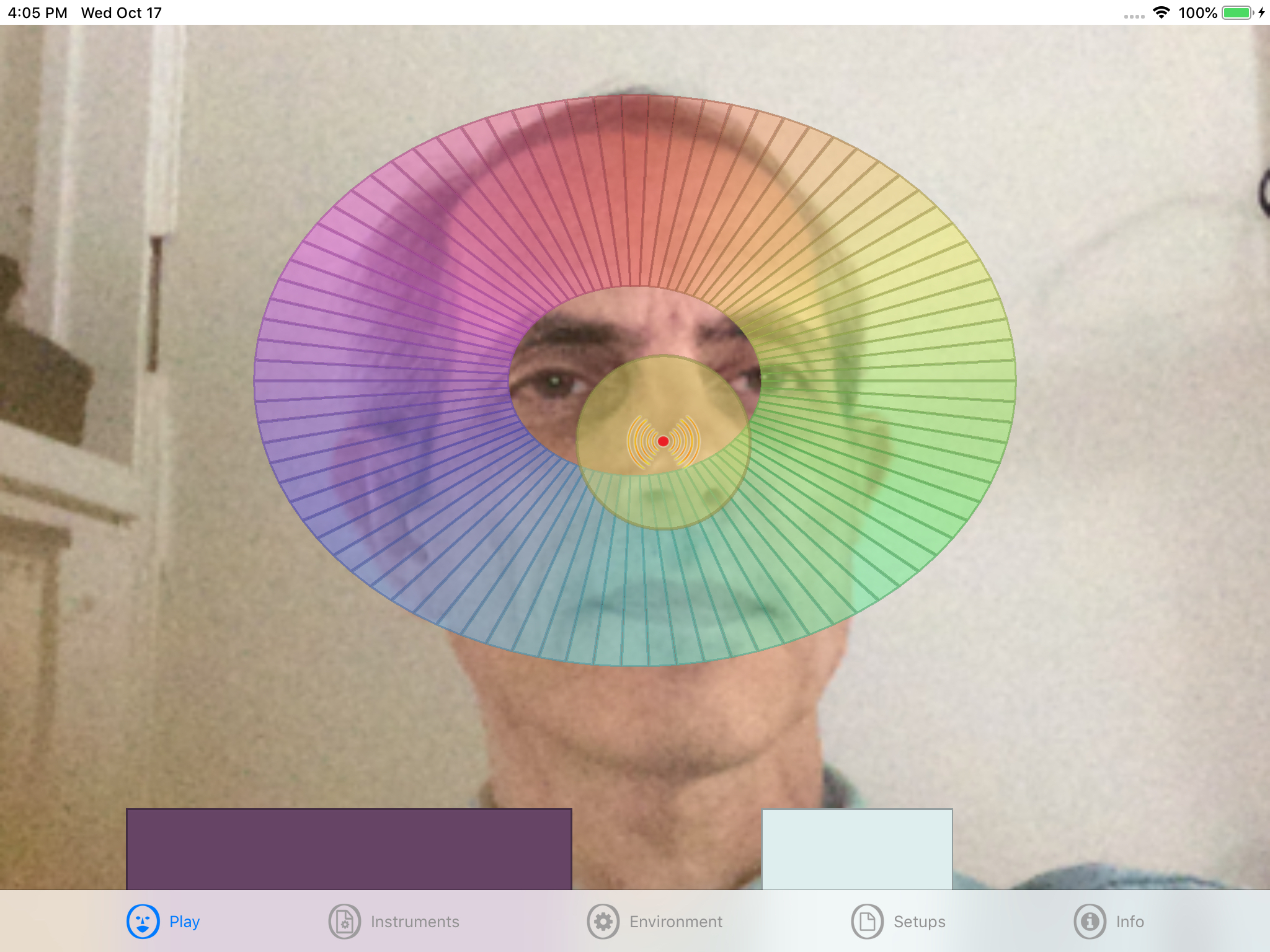


AUMI Sings was developed by Henry Lowengard under a grant from the Bruneau Centre for Excellence in Choral Music at Memorial University of Newfoundland.
It is related to AUMI, The Adaptive Use Musical Instrument.
AUMI Sings is an app like AUMI, but made more powerful in order to be able to provide and control a synthesized singing voice. It is also designed to be able to interactively change from state to state, so that a small amount of movement information can both play the sounds and traverse through sections of a composition that have different sound properties.
The human voice is at the core of human expression. Voices speak - where many sound characteristics are not considered meaningful - and sing - where the characteristics are considered meaningful. A speaking voice carries a lot of information, even outside of the words' meanings. The articulation of sound is complex and subtle. A singing voice carries more information than a speaking voice, and so requires even more information to control it.
If a voice were to be controlled with a minimum of information, that means that information has to be segregated into largely predictable states, and a flexible interface to control the changeable aspects of that state. The controls can be categorized into:
AUMI Sings uses a number of video trackers to provide signals that control the voice synthesis.
Video motion tracking provides very little information, usually just a position and velocity. This information cannot be provided faster than the frame rate of the video camera, which is further delayed by the processing needed to extract the motion. So while it can provide some information, it's better to have more degrees of freedom than can be provided this way.
Face tracking doesn't rely on motion to draw information out of a video frame (motion information can still be derived by comparing face detection features through time). Identifiable features can be used to add to the information needs of a composition.
AUMI Sings has a few of these trackers in various states of usefulness, and more will be developed.
AUMI (Adaptive Use Musical Instrument) is designed so that people with minimal voluntary movement can participate in improvised music activities. As a side effect, it can also be used as a tool for occupational and physical therapy and other clinical uses.
AUMI has a simple sound engine: it merely plays samples, either as one-shots or in a loop. When it uses musical scales, it is playing an array of already tuned samples. AUMI's trackers provide only X,Y, and the velocity of movement to choose and modulate sounds. The samples cannot be manipulated while they are playing, for example, by gliding between notes, changing dynamics, and it is difficult to choose an arbitrary note to play. Some of the choice precision is made easier by the new time quantization feature, but still the small amount of control information limits what is possible.
AUMI Sings uses more information from its trackers and a different concept of what a sound box is about, in order to drive the choice of the next sound and its articulation more precisely.
Sounds used in AUMI Sings are actually collections of smaller sounds ("ranks") which have been categorized with a name, frequency and intensity, and described as having an attack, sustain, and release section.
The Sound Boxes in AUMI Sings have a range of frequencies and intensities associated with it. When a cursor enters a sound box, and moves around in it, signals are sent out that get interpreted into synthesizer parameters and commands. The synthesizer can look at the current rank and determine which sample to play, and how to play it. Future versions of AUMI Sings will be able to use more sophisticated synthesis.
AUMI Sings also has time quantization, and a way to have samples splice onto each other. The boxes can have more flexible shapes than just rectangles, and be colored and arranged on the screen.
More detailed information about AUMI Sings can be found in this: AUMI Sings video playlist. A full technical document about it can be found here as a pdf file.